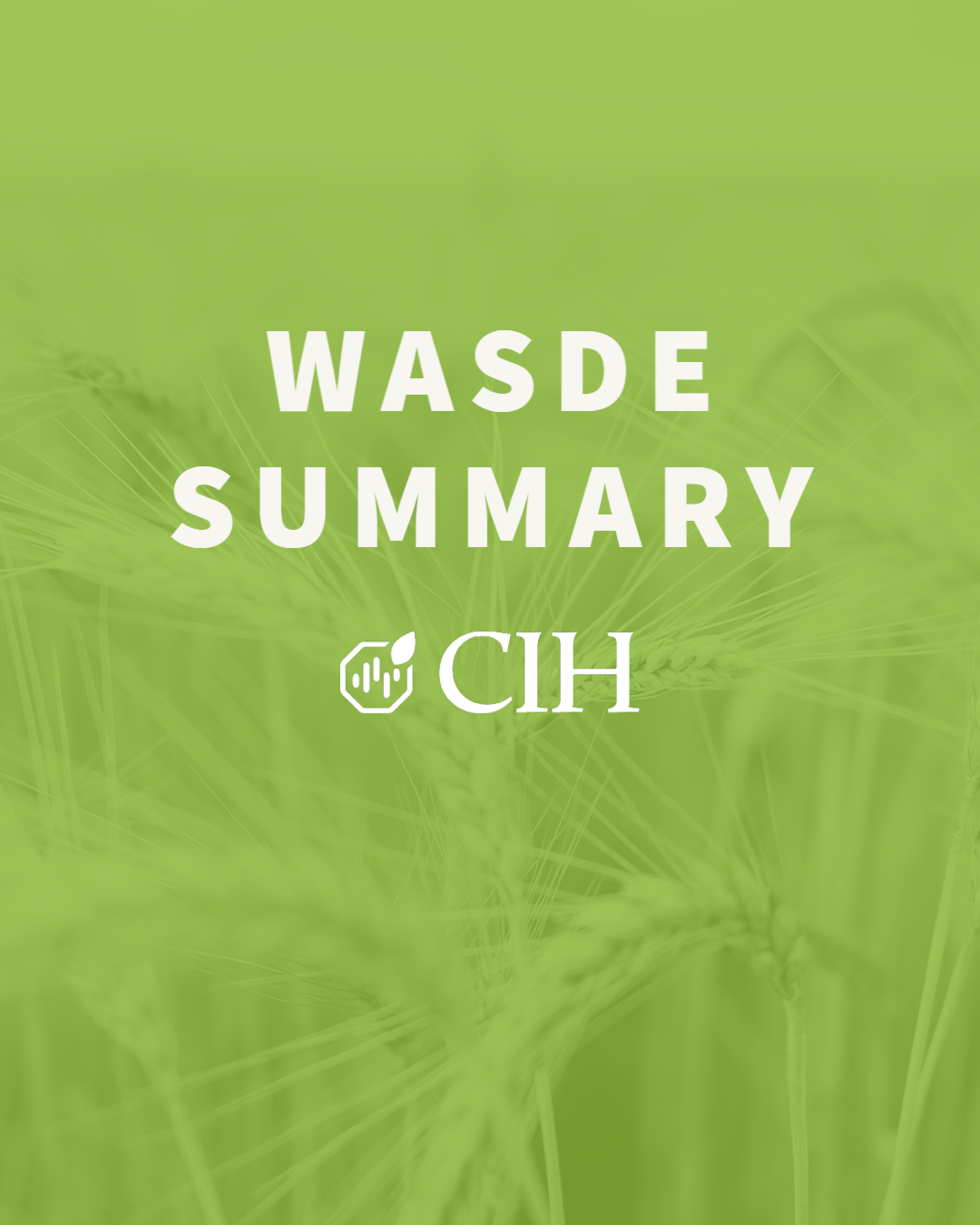
August 11, 2023
AUGUST 2023 WASDE REPORT SUMMARY & NOTES:
The August WASDE report was slightly supportive of corn, soybeans, and wheat but generally in line with expectations. This was the first report of the crop year to include results from farmer surveys for corn and soybean yield estimates.
For corn, the domestic 2023/24 outlook called for reduced supplies, lower use, and tighter ending stocks. Production was lowered to 15.1 billion bushels, in line with the average analysts’ pre-report estimate. Corn yield was pegged at 175.1 bushels per acre. This was 2.4 bushels lower than last month and slightly below the average pre-report estimate of 175.4 bushels per acre. Corn use was reduced by 95 million bushels from last month. Exports were cut by 50 million bushels. Ending stocks were lowered 60 million bushels to 2.2 billion, in line with analysts’ pre-report estimates. The season-average corn price received by farmers was increased by a dime to $4.90 per bushel. The global balance sheet also called for lower production and smaller ending stocks. Chinese corn production was lowered due to excessive rainfall. Interestingly, Ukraine corn exports were left unchanged despite the expiration of the Blac Sea Grain Initiative. Global ending stocks were lowered to 311.05 million metric tons, near the lower end of analysts’ pre-report estimates (310 to 322.2 million).
Fifty-seven percent of the corn crop was rated good/excellent through August 6:

Despite second-straight reduction in yield forecast, 175.1 bushels per acre would be 4th highest of all-time:

Outstanding new crop corn sales are at their lowest point for this point of the year since the 2019/20 marketing year:

New crop corn stocks-to-use ratio pegged near upper end of range over the past two decades:

The domestic soybean 2023/24 balance sheet called for lower production and lower ending stocks. Production was forecast at 4.2 billion bushels, lower than last month but in line with analysts’ average pre-report estimate. Yield was pegged at 50.9 bushels per acre, 1.1 bushels lower than last month and 0.2 bushels lower than the average pre-report estimate. Soybean exports were lowered 25 million bushels from last month. Ending stocks, at 245 million bushels, were lowered from July and slightly lower than the average pre-report estimate of 261 million bushels. The season-average soybean price was set at $12.70 per bushel, 30 cents higher then last month. The global balance sheet called for lower production, exports, crush, and ending stocks. The reduction in ending stocks to 119.4 million metric tons, however, was nearly identical to the average analysts’ pre-report estimate of 120 million.
Sixty-six percent of the soybean crop was setting pods through August 6:

Outstanding new crop soybean export sales have picked up in recent weeks but remain at their lowest level for this point in the marketing year since 2019/20:

New crop soybean exports lowered for the second-straight month:

Soybean stocks-to-use ratio remains near lower end of historical range:

The 2023/24 domestic wheat balance sheet called for decreased supplies, lower demand, and higher ending stocks. Production was pegged at 1.734 billion bushels. Domestic use was lowered marginally due to a reduction in food use. Wheat exports were reduced 25 million bushels on the slow sales pace to date. Ending stocks were raised 23 million bushels to 615 million. This was higher than the average pre-report estimate of 594 million but within the range of estimates (560 to 635 million). The season-average farm price was unchanged from July at $7.50 per bushel. The global balance sheet called for reduced use and lower stocks. Worsening drought conditions in Canada decreased their production by 2 million metric tons. Despite the expiration of the Black Sea Grain Initiative, Ukraine’s exports were unchanged from last month. Projected ending stocks were lowered to 265.6 million metric tons, nearly identical to analysts’ average pre-report estimate.
Export demand remains lackluster for U.S. wheat as outstanding export sales are at their lowest point over the past decade:

All wheat ending stocks raised from last month but remain historically low:

Russian wheat exports poised for another record year:
